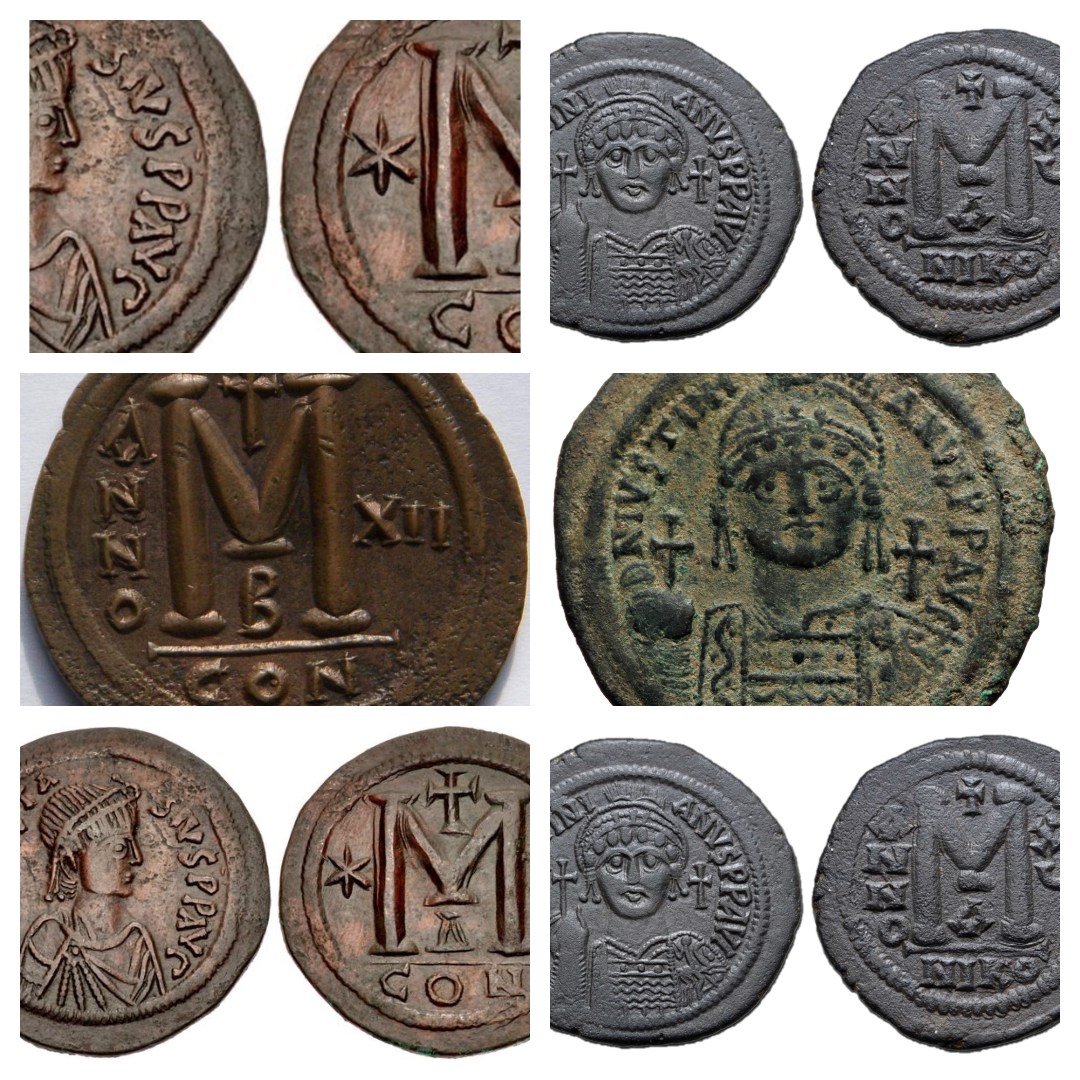
Understanding the Symbols on Byzantine Coins
What are the Symbols on Byzantine Coins?
Byzantine coins are among the most fascinating artifacts from the medieval world. These coins offer not only economic insights but also glimpses into the culture, religion, and politics of the Byzantine Empire. One of the intriguing aspects of Byzantine coins is their symbolic markings, such as the letters “M” and “B,” as well as other distinct symbols. In this article, we’ll explore the meaning behind these letters and symbols, providing a clear and comprehensive understanding.
Table of Contents
- Introduction to Byzantine Coins
- The Role of Letters on Byzantine Coins
- What Does the M Represent on Byzantine Coins?
- The Byzantine B Symbol: What Does It Mean?
- Other Symbols Seen on Byzantine Coins
- Religious Imagery and Its Importance
- Conclusion
- Introduction to Byzantine Coins
The Byzantine Empire, spanning from 330 to 1453 AD, produced a wide variety of coins that served as tools for commerce, propaganda, and religious expression. These coins were typically made of gold, silver, and copper, with designs that reflected the empire’s Christian beliefs and political authority.
The inscriptions and symbols on these coins were more than decorative; they conveyed messages to the people about the emperor, the empire’s strength, and its religious devotion. Understanding these symbols can provide a deeper appreciation for the sophistication of Byzantine culture.
- The Role of Letters on Byzantine Coins
Letters on Byzantine coins often served practical purposes such as indicating denomination, mint location, or ruler identity. Unlike modern coins, Byzantine coins did not rely solely on numeric values but used letters and symbols to convey their worth and origin.
Some common letters and their meanings include:
M, K, I, and E: These represented denominations.
Mint Marks: Letters indicating the city where the coin was minted. For example, “CON” stood for Constantinople.
Abbreviations for Rulers: Often, the emperor’s name or title would be abbreviated on the coin.
These letters combined artistic beauty with functionality, making Byzantine coins both practical and symbolic.
- What Does the M Represent on Byzantine Coins?
The letter M is one of the most iconic symbols found on Byzantine coins, particularly on copper coins known as follis. Here’s what it represents:
Denomination: The M signifies the value of the coin. In the Byzantine monetary system, the M represented 40 nummi, which was the largest copper denomination.
Symbol of Economy: The large M made it easier for traders and the public to identify the coin’s value quickly.
Stylistic Evolution: Over time, the style of the M varied, with some coins featuring a more decorative or blocky version of the letter.
For example, a coin bearing an M was called a “40-nummi coin” and played a significant role in everyday transactions.
- The Byzantine B Symbol: What Does It Mean?
Another prominent symbol seen on Byzantine coins is the B. This letter also carries multiple meanings:
Basilikon or Basileus: The B often refers to the emperor, known as the Basileus in Greek. Coins with this marking emphasized the emperor’s authority.
Denomination: In some cases, B could indicate a smaller denomination than M.
Abbreviation of Blessings: In religious contexts, B could stand for blessings or even be part of an inscription referring to Christ or the Virgin Mary.
The use of B symbolized both imperial power and divine authority, a recurring theme in Byzantine numismatics.
- Other Symbols Seen on Byzantine Coins
Byzantine coins were rich in symbolism. Apart from the letters M and B, several other symbols adorned the coins:
Crosses
The Cross: A common symbol reflecting the empire’s deep Christian faith. It often appeared as a central feature or in the emperor’s hand.
Chi-Rho: An early Christian symbol formed by the Greek letters Χ (Chi) and Ρ (Rho), representing Christ.
Icons of Christ and Mary
Jesus Christ: Depicted with a halo, often holding a book or making a blessing gesture.
Virgin Mary: Frequently portrayed as a protector of the empire.
Imperial Imagery
Crowned Emperor: Coins often featured the reigning emperor in full regalia, emphasizing their divine right to rule.
Victory Figures: Representations of Nike, the goddess of victory, symbolized military success.
Mint Marks and Greek Letters
Mint Marks: As mentioned, mint marks indicated where the coin was produced, with cities like Constantinople, Antioch, and Thessalonica commonly represented.
Greek Abbreviations: Inscriptions often used Greek letters to communicate short messages, such as “XRISTUS BASILEU” (Christ the King).
- Religious Imagery and Its Importance
Religion was central to Byzantine life, and this is reflected in their coins. The inclusion of Christian symbols served several purposes:
- Legitimizing Rule: By associating their rule with divine approval, emperors strengthened their authority.
- Promoting Christianity: Coins circulated widely, spreading Christian symbols to diverse regions.
- Blessing the Economy: The presence of crosses and Christ’s imagery symbolized blessings for the empire’s economy.
The integration of religion into coins made them more than just currency; they became tools of cultural and spiritual influence.
- Conclusion
Byzantine coins are a window into the rich history and culture of one of history’s most enduring empires. The letters and symbols on these coins, from the iconic M and B to crosses and religious imagery, reflect the Byzantine Empire’s blend of practicality, politics, and piety.
Understanding the meaning behind these markings enriches our appreciation of Byzantine numismatics and offers valuable insights into how the empire communicated its values and beliefs. Whether you are a historian, collector, or enthusiast, the study of Byzantine coins is a rewarding journey into the heart of a civilization that bridged the ancient and medieval worlds.
3 Comments